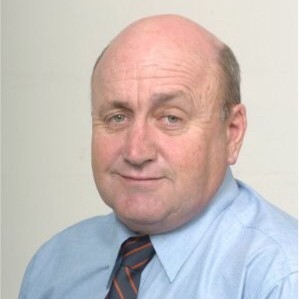Opinion: SA political poll tells tale of two parties with a crushing blow
Is the state Liberal Party broken? Former political adviser and journalist Kevin Naughton scrutinises exclusive new polling results provided to InDaily ahead of next year’s state election.

It’s a tale of two parties; one that is beset by a generation of infighting and the other with a “once in a generation” leader.
It shows a party out of favour with 66 per cent of voters, out of touch with the new generation (a mere 13 per cent of 18-34 yr olds) and facing a wipeout in the metropolitan area.
How did it come to this, when the party was gifted a landslide victory in 1993’s “State Bank collapse” election which political scientist, the late Dr John Hepworth, described as “a free ticket to long term power”?
This Tuesday, 22nd October, marks 25 yrs since then-Liberal Premier John Olsen -a beneficiary of that free ticket – resigned after “misleading a judicial inquiry”, handing the reins to Rob Kerin and a few months later, delivering government to Labor’s Mike Rann.
Vincent Tarzia was 14.
In the years since that day in 2001, the Liberal Party has had seven leaders. Labor has had three in the last 30 years – all of them serving as Premier.
You might like
If the DemosAU/Ace Strategies poll is reflected at the March 2026 election, the South Australian Liberal Party will need to reflect on what it is, what it used to be and where to next.
From its beginnings in 1932 and until the 1970s, the party was known as The Liberal Country League (LCL), a nod to its rural base and reliance on an electoral system that gave more weight to those voters (in one election the rural seat of Frome had 4500 voters while metropolitan Enfield had 42,000).
It enjoyed some support from the urban middle class, but that faction split from the LCL in 1972 and formed The Liberal Movement before a tense re-marriage in 1976 under the banner of The Liberal Party.
| Sponsored |
The in-fighting continued, some based on influential families (The Evans/Chapman feud) and some based on the ideologies of the conservative and moderate factions.
It continues today with the conservatives taking the party to the right, alienating city-based voters on environmental issues and in doing so losing every metropolitan seat in the Federal election earlier this year.
Vincent Tarzia wasn’t born when the first Liberal split happened in the 1970s and was just 15 when John Olsen blew the 1993 legacy giving Labor power for all but four years of the following 25.
In 2014, Vincent was part of a young cohort of new Liberal MPs, almost all of whom have since lost their seats or resigned.
Stay informed, daily
The leadership fell into his lap when one of those young MPs, David Speirs, resigned the leadership and eventually his seat and later pleaded guilty to charges of “supplying a controlled drug”.
Speirs’s leadership had been poor and colleagues were happy to background the media on his performance inside and outside the parliament.
By the time Tarzia took on the near-impossible task of uniting the Liberals, it was a mountain too high.
It’s unlikely that he has the support of the conservative/rural factions and an improved performance at the polling booth is no guarantee that he would keep the Leader’s job.
His party is broken. The decades of infighting are not resolved, and it bears little resemblance to the political powerhouse that underpinned the stable leadership of Sir Thomas Playford, Premier from 1938 to 1965.
At the time of the DemosAU/Ace Strategies poll, Labor was tackling social media issues, industrial readjustment in the key regional cities of Whyalla and Port Pirie, nation-wide challenges in the health system and new environmental phenomena such as the coastal algal bloom.
It’s Premier, Peter Malinauskas, mixes the tough business of government with the confidence boosting strategies of seizing major events such as Gather Round, the V-8s return, LIV Golf and world-class opera extravaganzas.
As the poll shows under responses to the question of overall feelings, most voters say our state is heading in the right direction.
It’s time for the Liberal Party to decide on what direction it wants to take. It might be time to formalise it’s fractured past and split into the two parts it tried to knit together.
The poll suggests the voters think that’s already happened.

-Kevin Naughton is a former journalist at the ABC, Newscorp, Fairfax and InDaily. He has advised Liberal and Labor MPs in governments and oppositions.








